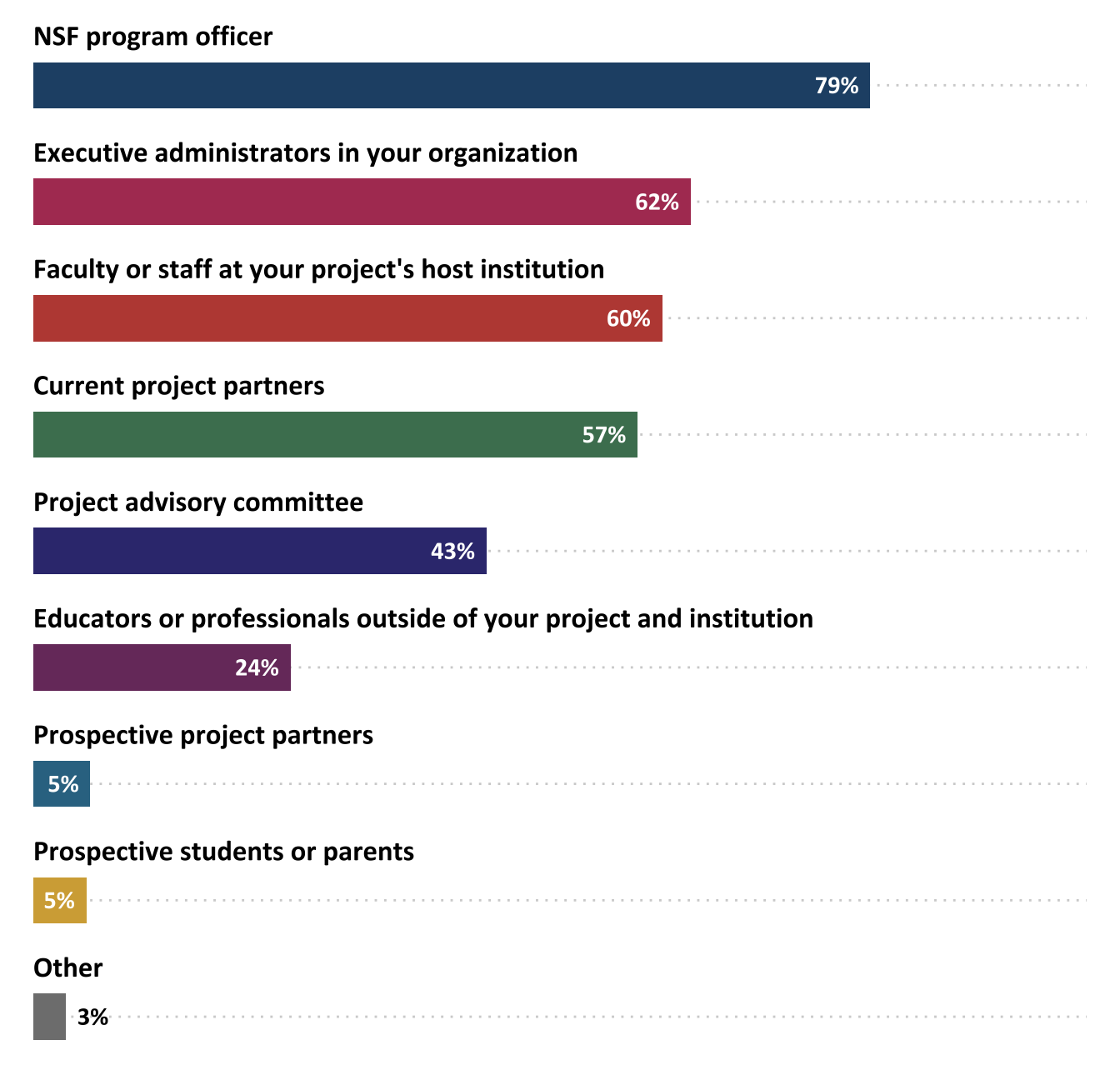
Chapter 11 Evaluation
11.0.0.0.1 Each ATE project is required to have an evaluation component to assess its quality and effectiveness. Evaluation of ATE and other NSF-funded projects is intended to serve two distinct purposes: (1) Produce information that can be used to improve a project as it is being implemented and (2) Determine and document a project’s achievements (Frechtling, 2010).
11.0.0.0.2 ATE PIs were asked about their evaluators and interactions with them, as well as their projects’ use and dissemination of evaluation results.
11.1 Evaluation
11.1.0.1 Ninety-three percent of ATE projects engaged an evaluator.
Three hundred thirteen ATE projects had evaluators in 2022. Of the Twenty-four PIs who said they did not have evaluators, 12 were in their first year of funding. Of the 313 projects with evaluators, 90% reported having an external evaluator, with 7% having both an internal and external evaluator and 3% having only an internal evaluator.
Thirty-three percent of PIs reported that they interacted with their evaluators continually (at least once a week) or often (two or three times a month), while 42% interacted with their evaluators occasionally (more often than quarterly) and 17% did so infrequently or rarely (once a quarter or less).
11.1.0.1.1 Almost half of ATE projects received both oral and written evaluation reports.

Figure 11.1: Types of evaluation report received by ATE projects (n=310)
Of the 276 PIs who received evaluation reports, 72% indicated their project’s evaluation caused them to make a change in implementing their project, and 40% indicated that the evaluation caused them to make a change in their project’s goals, objectives, or target audience.
